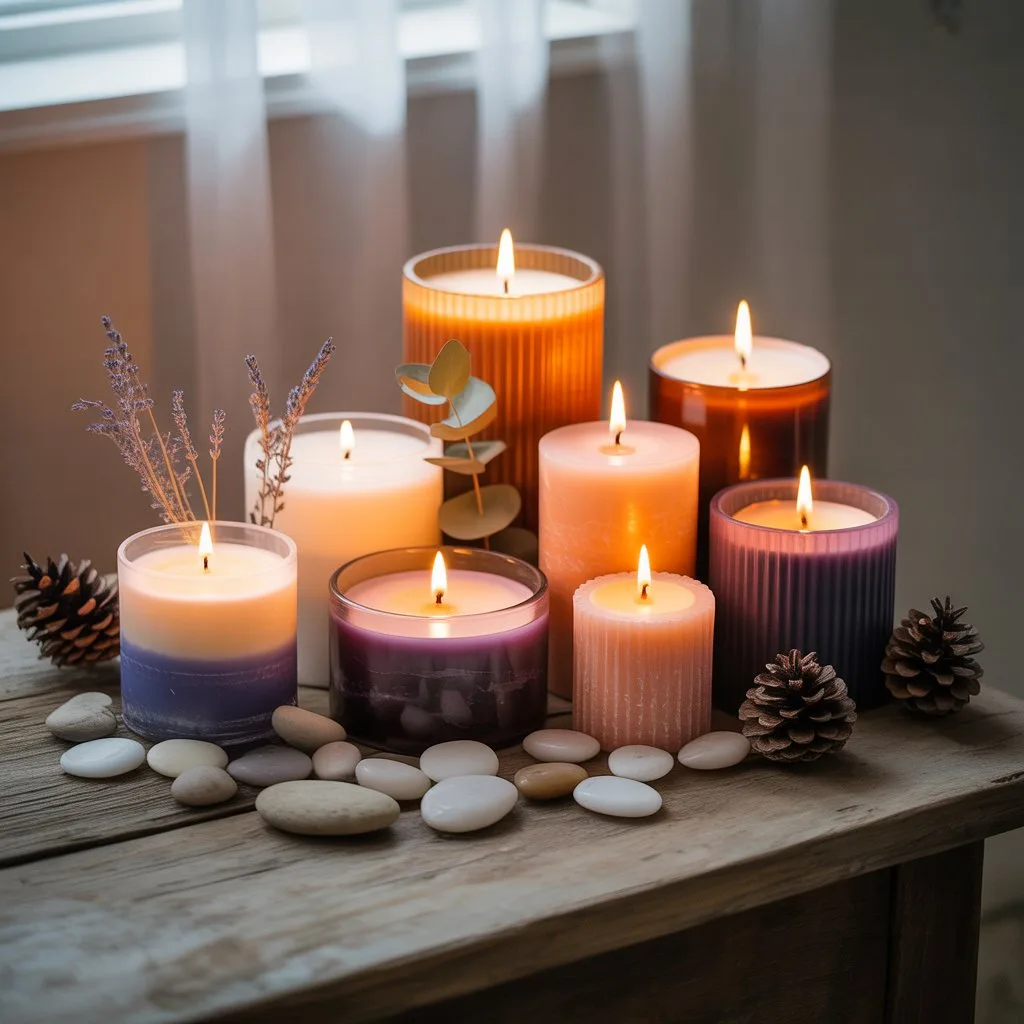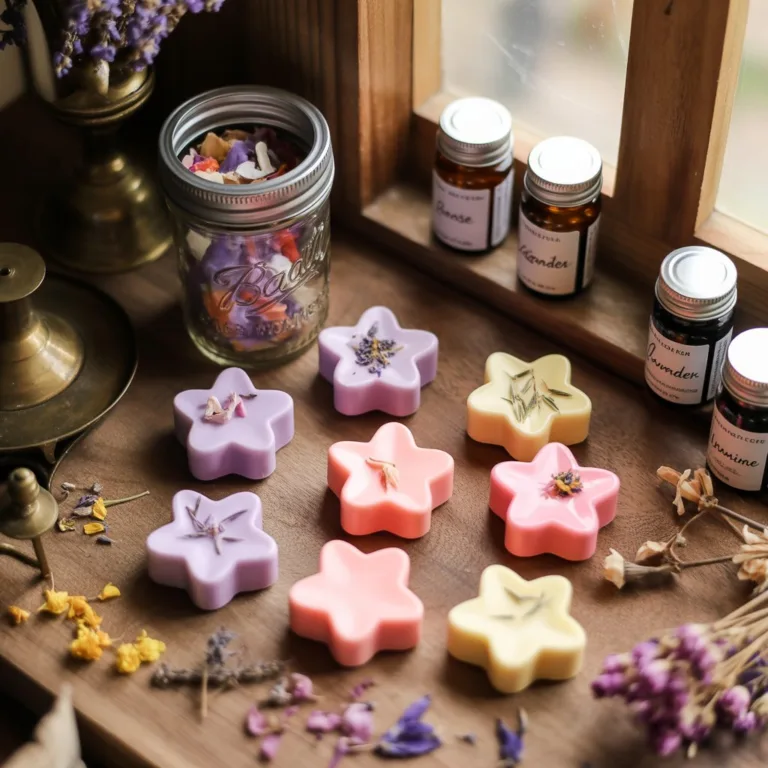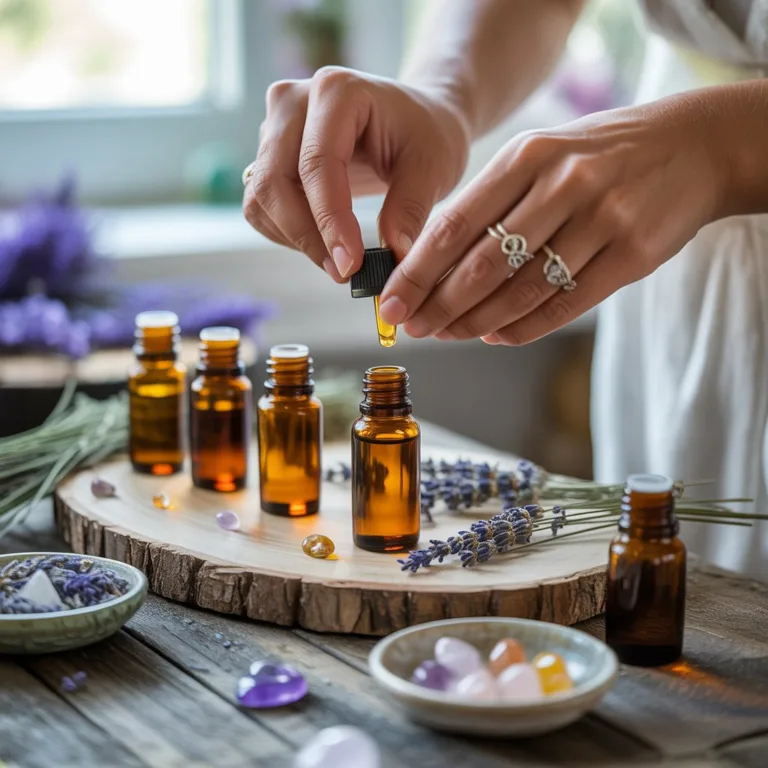Creating layered candles with botanical touches is more than a craft—it’s a beautiful blend of creativity, mindfulness, and natural design. Candle-making has evolved from a purely functional activity into an expressive art form that reflects one’s personality, mood, and values. By integrating layers of color, texture, and organic materials such as dried flowers, herbs, or essential oils, you can transform a simple candle into a sensory masterpiece.

This process invites both relaxation and imagination. It combines the tactile joy of working with wax and botanicals with the meditative rhythm of layering and scent blending. Beyond their aesthetic appeal, these candles embody sustainability when crafted with natural waxes and locally sourced botanicals, aligning perfectly with the modern eco-conscious lifestyle.
The Beauty Behind Layered Candles
Layered candles are visually captivating. Each color or texture tells a story—soft gradients may symbolize calmness, while vibrant contrasts express energy and creativity. The layering technique involves pouring wax in stages, allowing each section to cool slightly before adding the next. The result is a visually striking candle where each layer contributes its own scent and tone.
When combined with botanical elements, these candles take on a new dimension. Petals, leaves, or spices add visual depth and natural fragrance, turning the candle into a piece of living art. Unlike traditional single-pour candles, layered candles engage multiple senses—sight, smell, and touch—making them ideal for décor, gifting, or mindful self-care.
In addition, crafting layered candles encourages sustainability. By using soy, coconut, or beeswax instead of paraffin, you create an eco-friendly product free of harmful toxins. Choosing dried flowers or herbs from your own garden further enhances the personal and sustainable aspect of the process.
Selecting the Perfect Wax Base
The foundation of a great candle lies in its wax. The type of wax you choose will influence the candle’s burn time, scent throw, and appearance. Here are the most common natural waxes ideal for layered designs:
- Soy wax: A popular choice for eco-friendly candles. It burns slowly, holds fragrance well, and offers a smooth finish ideal for layering.
- Beeswax: Known for its natural honey aroma and long burn time, beeswax produces a warm golden tone that complements botanical inclusions beautifully.
- Coconut wax: Silky and clean-burning, it blends well with essential oils and provides a creamy texture.
- Palm or rapeseed wax: Sustainable alternatives that give a slightly crystalline texture, adding visual interest to layered candles.
Each wax type behaves differently during melting and cooling, so experiment to find the combination that best suits your creative vision. Mixing soy and coconut wax, for instance, can enhance scent diffusion while maintaining a smooth layering surface.
Understanding Wick Selection
A properly chosen wick ensures that your candle burns evenly and safely. Wicks vary by material, thickness, and coating, and the choice depends on your wax type and candle diameter.
- Cotton wicks are the most common and versatile, providing a steady burn.
- Wooden wicks offer a gentle crackling sound reminiscent of a fireplace, enhancing the sensory experience.
- Hemp wicks burn cleanly and pair well with natural waxes.
Test-burning is essential before finalizing your candle design. A wick too small may cause tunneling, while one too large could produce soot or burn too hot. Achieving balance between wick size, wax density, and container shape is key to both aesthetics and performance.
Exploring Botanical Elements
Botanicals are what elevate layered candles from decorative objects to natural art pieces. They bring texture, symbolism, and fragrance derived from nature itself. Choosing the right botanicals requires both creativity and practicality, as some materials handle heat better than others.
Ideal botanicals for candle crafting include:
- Dried rose petals, lavender, or jasmine for soft, romantic designs.
- Herbs like rosemary, sage, or thyme for earthy, grounding tones.
- Citrus peels and spices such as cinnamon or star anise for seasonal warmth.
- Pressed leaves, ferns, or small wildflowers for visual texture.
Place botanicals strategically. Embedding them along the sides of clear glass containers preserves their beauty without risk of burning. Alternatively, sprinkle them lightly on the surface once the final wax layer is poured and slightly cooled.
Always ensure the materials are completely dry—moisture can cause wax splattering or mold. Avoid large or dense botanicals that might interfere with the wick’s burn path.
Incorporating Natural Fragrance
Scent adds emotional depth to your candle. Using essential oils instead of synthetic fragrances supports an eco-friendly approach while offering therapeutic benefits. Each layer can feature a complementary or contrasting aroma, creating a multi-sensory journey as the candle burns.
For example:
- A base layer infused with sandalwood for grounding.
- A middle layer scented with lavender for relaxation.
- A top layer carrying hints of citrus for freshness and clarity.
This gradual shift in scent mirrors the layered visual design. When blending essential oils, use a carrier oil or follow proper dilution guidelines to maintain both safety and consistency.
Keep in mind that some essential oils—like citrus or clove—can affect wax color or stability. Testing small batches ensures that your final product meets both aesthetic and functional expectations.
The Art of Layering
Creating layers in a candle requires patience and timing. The secret lies in letting each wax pour partially set before adding the next. If poured too soon, layers may blend together; if poured too late, they may not bond properly.
Temperature control is crucial. Allow each layer to cool until it forms a thin skin but is still warm enough for adhesion. The next pour should be slightly warmer than the previous one to ensure a seamless connection between layers.
Color plays an equally important role. Choose complementary or gradient hues to reflect the theme of your candle. Soft pastel transitions evoke tranquility, while bold contrasts suggest energy and movement. You can use natural colorants like mica powder, spirulina, turmeric, beetroot, or activated charcoal to maintain a natural aesthetic.
Experimentation is part of the creative process. Try alternating opaque and translucent layers, embedding botanicals between them, or creating ombré effects that gradually fade from dark to light.
Crafting Sustainable Containers
The container you choose completes the artistic statement. Eco-conscious crafters often repurpose jars, ceramic mugs, or metal tins, giving discarded items a new purpose.
Transparent glass containers are perfect for showcasing embedded botanicals and layered colors. Meanwhile, minimalist ceramic vessels offer a natural, earthy feel. If you prefer zero-waste options, create pillar candles using reusable molds or biodegradable forms.
Before pouring wax, clean and dry containers thoroughly. Preheat them slightly to prevent uneven cooling and cracking. Consider labeling your finished candles with recycled paper or plant-based inks for a cohesive sustainable presentation.
Experimenting with Texture and Finish
Beyond layering and scent, the candle’s surface finish can express creativity. Techniques such as topping layers with crushed petals, gold mica dust, or a drizzle of contrasting wax add sophistication. For rustic charm, allow slight imperfections or visible textures—these organic details emphasize the handmade nature of the piece.
You can also experiment with dual-layer effects, where a clear gel wax overlays a solid natural wax base, encasing botanicals like floating petals or herbs. This adds depth and dimension, turning the candle into a three-dimensional artwork.
If you prefer a matte look, polish the candle gently with a soft cloth after curing. For a glossy finish, buff it lightly with a warm cloth to reveal the wax’s natural sheen.
Safety and Sustainability Practices
Working with hot wax and essential oils requires careful handling. Always craft in a well-ventilated space, wear heat-resistant gloves, and keep a thermometer nearby to monitor wax temperatures. Never pour wax above 90°C (194°F) as it may scorch botanicals or alter fragrance quality.
Sustainability extends beyond materials—it also includes how you dispose of leftovers. Reuse wax remnants from previous projects by melting and combining them into new layers. Compost botanical waste or repurpose it in potpourri.
Opt for biodegradable wicks, plant-based dyes, and locally sourced ingredients whenever possible. Even small conscious decisions contribute to a more sustainable craft practice.
The Emotional and Aesthetic Appeal
Handcrafted layered candles serve as both functional objects and emotional expressions. They evoke comfort and warmth while symbolizing creativity and renewal. The botanical inclusions remind us of nature’s delicate patterns, while the layered design mirrors life’s complexity—each section distinct yet harmoniously connected.
Lighting a layered candle with botanical touches is more than illumination; it’s an act of reflection. The soft flicker of light enhances mood, fills a space with fragrance, and brings a sense of calm to busy routines. These candles can be used in meditation, gift-giving, or simply as meaningful décor that reflects sustainable living.
When shared as gifts, they carry messages of care and mindfulness, embodying the time, effort, and love poured into each layer. In a world driven by fast consumption, such handmade creations stand as gentle reminders of patience, beauty, and respect for natural materials.
Inspiring Further Creativity
Once you’ve mastered the art of layered candles with botanical touches, endless variations await. Try combining pressed flowers from different seasons, experimenting with geometric layer shapes, or integrating crystals and seashells for added symbolism.
For educational or community workshops, this craft offers a hands-on way to teach sustainability and creativity simultaneously. Participants learn not only about wax and botanicals but also about reducing waste, appreciating slow craftsmanship, and nurturing creativity.
Each new project reveals fresh inspiration—perhaps a candle inspired by a forest walk, a seaside memory, or your favorite herbal tea. With every pour, you refine your skills and deepen your connection with natural art forms.
Creating layered candles is both science and poetry, blending precision with imagination. The process rewards patience, attention to detail, and a genuine appreciation for the natural world. When the final flame flickers to life, it carries the energy of all the care and creativity invested in its making.
Through mindful crafting, you’re not just producing candles—you’re kindling moments of peace, beauty, and environmental awareness that extend far beyond the wick’s gentle glow.

Lucas Hartman is a DIY enthusiast and sustainability advocate focused on natural crafts and eco-friendly home décor. With a background in arts and design, Lucas creates tutorials that help families and hobbyists transform everyday recycled or organic materials into beautiful, functional projects.



